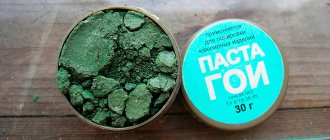An umbrella is a necessary accessory for everyone. It reliably protects from rain and wind, complements the style and image. But, unfortunately, not everyone cares and dries products correctly. Many people leave their umbrella open on the floor after rain. Such drying is contrary to the rules and regulations of etiquette, and also reduces the service life of the accessory.
Improper drying causes the wet canopy fabric to stretch and loosen the knitting needles. In addition, the material begins to sag, and the product loses its attractive appearance. Let's find out how to properly dry an umbrella after rain, cleaning or washing so that it maintains its quality and presentability.
How to properly dry an umbrella
Open the wet umbrella slightly and hang it half-open or place it in a special stand. This will preserve the material and fabric of the product. It will not allow moisture to pass through and will not stretch, which is especially true for nylon and silk.
By the way, the highest quality umbrellas are made from rubberized satin with water-repellent impregnation or pongee. The latter is a durable and dense fabric in a combination of polyester and cotton or silk.
To properly dry your umbrella, you cannot open the canopy completely, otherwise it will stretch. As a result of improper drying, strength and water-repellent properties are reduced, the knitting needles begin to loosen and the fabric begins to sag. There will be no trace left of the beautiful and stylish accessory.
In addition, you should not put a damp or even slightly damp umbrella in the cover, otherwise mold will appear on the material! Place the product in its case only after it has completely dried. Moreover, the product is dried at room temperature away from batteries, radiators and electrical appliances. It is not recommended to dry the accessory in the sun, otherwise it may fade.
Common drying mistakes
Many people are accustomed to resorting to methods when drying umbrellas that adversely affect the quality and functionality of these products. In order for the umbrella to serve for a long time without losing its important properties, it is necessary to avoid mistakes. To do this, let’s look at which of them are most common.
Opened
It would seem that all you have to do is open an umbrella that has gotten wet in the rain and it will dry out in a couple of hours. It is this method that our compatriots often choose, considering it the simplest and fastest.
In fact, it is highly undesirable to dry the accessory completely open. This is due to the fact that wet fabric becomes highly stretchable and after some time begins to sag. As a result, the inherent strength and moisture-repellent properties of the umbrella are reduced, and with frequent drying, they are completely lost. In production, materials are often used whose structure expands when wet and contracts when dried. Under such conditions, numerous microscopic holes appear, and the service life of the umbrella is significantly reduced.
In the sun
A product left to dry in the sun will also quickly lose its original properties.
The main disadvantages of this type of drying:
- the appearance of stains and stains on the surface of the product;
- fading, discoloration and loss of aesthetic appeal of the fabric.
Wet product on the shelf
Immediately after rain, you should not leave a wet umbrella on the shelf. In conditions of constant dampness, the knitting needles of the product rust and the fabric becomes moldy. A persistent unpleasant odor appears due to non-drying. In addition, if the shelf is made of wood or wood-based materials, it can also be damaged by moisture.
Near the battery and heating devices
Umbrellas should not be kept near radiators or electric heaters. These devices emit very strong heat, which quickly makes the fabric structure dry and stiff.
How to dry an umbrella according to etiquette
If you are interested in the question of how to dry an umbrella according to etiquette, in this case you cannot leave the product open. This is a sign of bad taste. If you are visiting or in a public place, leave the umbrella half-open and hang it on a hanger or place it on a special stand.
If you hang an umbrella on a hanger, be careful not to let any water dripping from the fabric get on anyone's clothes or shoes. When the product is dry, collect and shake the umbrella, put it in the case. Thus, the product is dried at room temperature in a semi-closed state, hanging by the handle or placing the dome down on a stand. This way the dome will dry well and will not stretch or lose its shape.
What to do with a wet umbrella when visiting
You were going to visit, but it started to rain heavily outside, so you had to go indoors with a wet umbrella. What's the best way to proceed? Before you enter the room, shake it thoroughly to remove all excess moisture. Then, as a matter of etiquette, you need to ask where it is best for you to put your umbrella away. It is good if there is a special stand in the house on which you can dry it, but if there is none, you can hang it on a hanger, making sure that water does not drip from it and that it does not stain other things. You can dry it on the balcony, asking the owners to take you there.
So, now you know how to properly dry a wet umbrella. The rules are very simple: shake off excess water and leave it to dry in the assembled state, but without pulling the knitting needles together. If you follow these recommendations, your favorite umbrella will serve you for many years.
In wet autumn, an umbrella is indispensable; you cannot do without it on a stormy, rainy autumn day. Do you know how to dry an umbrella?
Drying an umbrella by opening it is considered the correct way only in Russia. In fact, this is not entirely correct. The umbrella fabric retains its water-repellent properties and strength if it is dried without tension. When wet, the fabric stretches, and if the umbrella is dried open, the tension will be weaker each time. A folded umbrella takes longer to dry than an open one, but it lasts much longer.
According to the rules of etiquette, it is considered bad manners to dry an umbrella open.
And Americans even have a superstition that drying an umbrella with it open means a lot of tears.
In addition, you cannot dry the umbrella near the battery, otherwise the canopy fabric will be deformed.
Do not dry the umbrella in the sun, otherwise the canvas may become discolored and stains may appear on it.
Remember this and dry the umbrella in a “relaxed” state away from the radiator. This way you will ensure its durability and avoid unnecessary problems.
Instructions
Most people dry their umbrellas flat. However, this is not recommended - in this position the fabric from which the umbrella is made stretches faster. This is especially true for synthetic umbrellas. Therefore, if you want your umbrella to serve you for a long time, it is recommended to use it half-opened.
If you live in an ecologically clean area, where there are no smoking factories or congested roads, you can consider yourself lucky - rainwater here can serve as a standard of cleanliness. Residents of megacities and those who live next to industrial enterprises are in a worse situation - rain is a common occurrence here. Regular exposure of the skin and hair to rainwater contaminated by emissions from factories and cars causes allergic reactions; walking in acid rain threatens respiratory diseases.
How long does it take for an umbrella to dry?
Pongee and satin dry in five to ten minutes, since drops easily roll off the dome, and the material remains almost dry. These are reliable and durable fabrics that do not tear or stretch, do not shrink or fade, and look aesthetically pleasing, solid and presentable.
Traditional polyester is a cheaper option. It is also characterized by durability and quick drying, but is less durable in the places where the knitting needles are attached and looks less attractive. Read how to care for polyester, pongee and other synthetic fabrics here.
Nylon takes longer to dry than other materials. Experts do not advise choosing this dome material, as it quickly tears and stretches, fades and even fades under heavy rain. It can stain a person's clothes when it rains or objects they lie next to.
Drying umbrellas in a half-open state takes longer than in a fully open state. However, this method will preserve the fabric in its original form and protect the color and brightness of the product. The umbrella will last a long time.
Other drying errors
There is another serious mistake: after rain, leaving the umbrella in its case, tied with a belt or in a bag, instead of drying it. It would seem that it’s no big deal, because the production uses a special fabric that is not afraid of moisture and does not rot.
On the other hand, this is precisely the problem. Without allowing moisture and steam to pass through, the umbrella will dry many times longer than any crumpled clothing. Moisture will remain on its surface, and over time will become a source of an unpleasant musty odor. If measures are not taken after this, the fabric will become covered with mold stains. It is quite difficult to clean an umbrella from it - in some cases you have to get rid of it.
In addition, quite often moisture gets from the fabric inside to the metal parts. Large, serious companies use special stainless alloys in the manufacture of umbrellas. But many budget products from China are made from cheaper and less reliable materials.
Prolonged exposure to high humidity conditions leads to rust. Unattractive red stains spread across the fabric, and the knitting needles themselves simply rot. The author of Miss Clean magazine had a chance to check this on her umbrella - fortunately, the spots on the black dome were not too noticeable.
If it is also an automatic umbrella, then the mechanism often rusts and ceases to perform its function. When you press the button, it does not open, and when you try to open it manually, it simply breaks. Alas, deterioration in the functioning of “joints” is recorded even in expensive branded umbrellas.
The third common mistake is drying the umbrella in the sun. Of course, in direct sunlight the fabric will heat up and dry faster. However, this speed comes at a price. First, white salt spots appear on the umbrella. Secondly, the fabric fades - this is especially true for bright materials. If stains can be easily removed by simply wiping with a damp cloth, then nothing can be done about the fading of paints. At best, in a couple of years with such regular drying, it will age and lose its original attractiveness.
How to store an umbrella
The umbrella should be stored folded, in its cover, at room temperature. Before long-term storage, thoroughly rinse and dry the product. Wipe the handle, shaft and knitting needles dry. Lubricate the spokes with machine oil and the metal frame with grease. This will prevent rust from occurring.
If the material is worn out in some places, treat the damaged areas from the inside with clear nail polish. Wrap the joints in newspaper, paper or film, fold the umbrella, put it in a cover, and then in a bag. Do not store the accessory at the bottom of a shelf or bag, or stack other items on top of the product. This can cause the knitting needles to bend or break. During long-term storage, periodically remove and ventilate the umbrella.
Guarantee. When you don't have to think about anything
| All products in the Zonta.Ru online store are covered by a manufacturer’s warranty of 6 months, and Knirps products are covered by a 3-year warranty. If a warranty claim occurs during this period, you can contact us by phone +7 or by writing an email We will exchange the product for the same or similar one, subject to a warranty claim. The warranty case is:
What is not covered under warranty:
|
If the warranty has already expired and the umbrella is broken, you can try to repair it.
Umbrella care
In order for the accessory to serve for a long time, not break and maintain a presentable appearance, it is important not only to store and dry it correctly, but also to regularly wash and clean the umbrella. To remove dust, use soft brushes and a solution of water and detergent for synthetic, wool or silk items.
To remove dirt and stains, traces of rust, colored materials are cleaned with a solution of ammonia in a ratio of alcohol and water of 1 to 10. For dark and black materials, use table or apple cider vinegar. To do this, dissolve two tablespoons of vinegar in a liter of water and wipe the surface with the solution. This method will remove stains and dirt, refresh and preserve color.
To remove rust stains, use lemon juice; for greasy stains and marks, use dishwashing detergent. And to return the color to the black umbrella, clean the surface with a sponge and brewed strong black tea. After the manipulations, rinse the fabric thoroughly with warm, clean water and leave the product to dry completely.
During heavy use during the rainy season, the products are cleaned regularly to keep them neat and attractive. To do this, wash the umbrella in warm soapy water with the addition of washing powder or rinse aid. Open the dome and wipe the surface with a soft sponge soaked in this composition.
Rinse off the soapy water with clean warm water, wipe the knitting needles and shaft with a damp cloth, and then wipe dry. Leave the product to dry half-opened. For more information on how to properly wash an umbrella, read the link.
Proper washing
Often rainwater leaves marks on the fabric and the need arises. How to do this correctly? You can use simple rules for washing your favorite accessory:
Removing stains
It happens that rusty stains from knitting needles or other stains of an incomprehensible nature may remain on the fabric of the product. You can clean your umbrella using fabric-friendly products:
Color preservation
There are several tricks that need to be used periodically to maintain or restore the color of the product:
- If the black umbrella has lost its color, it should be wiped with a sponge previously soaked in tea leaves. The tea should be black and strongly brewed. Then rinse the fabric and wipe with vinegar solution at a ratio of 1:1.
- Ammonia will easily clean colored fabric. Add 0.5 cups of ammonia per liter of water and wipe the umbrella with this solution.
- A white umbrella can be cleaned with soda. In addition to the fact that soda gently cleans fabric, it also bleaches it.











